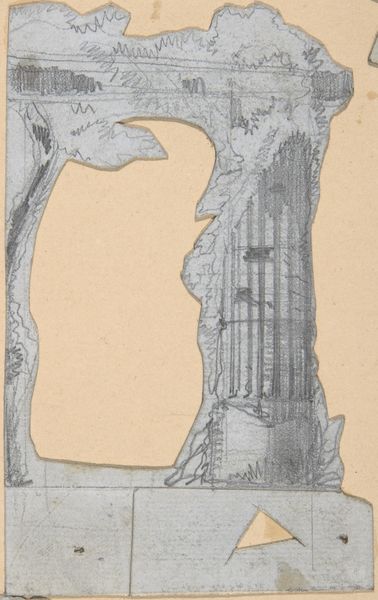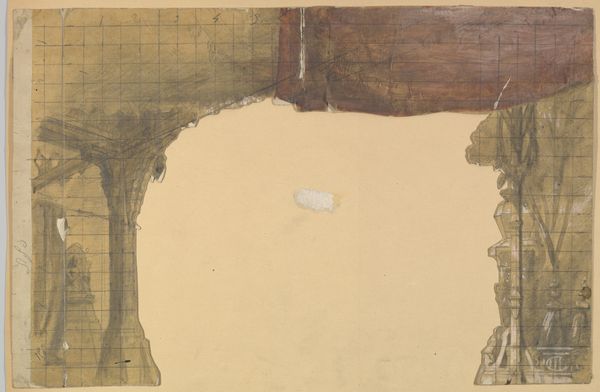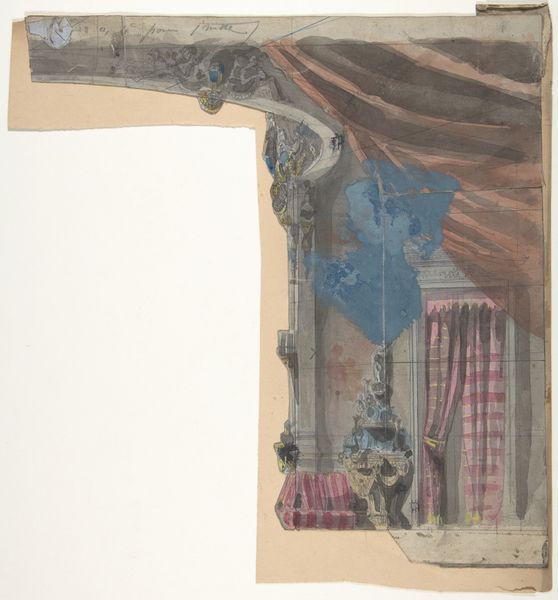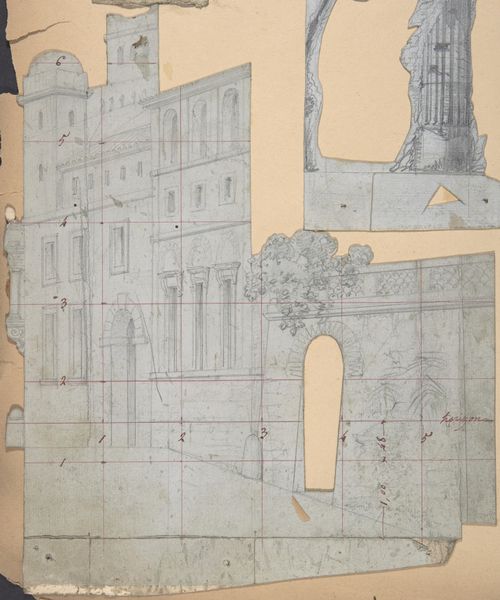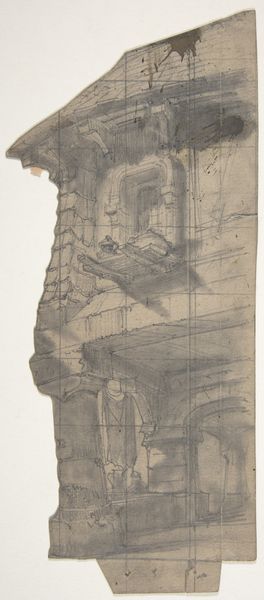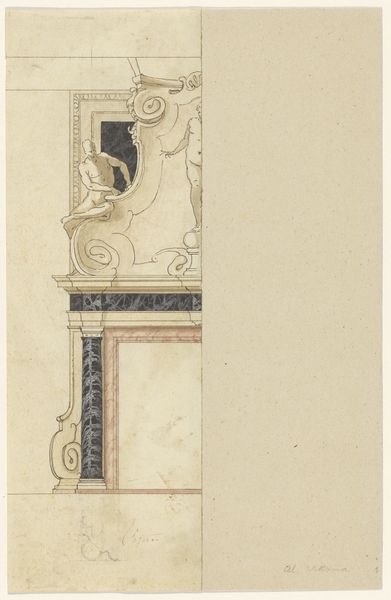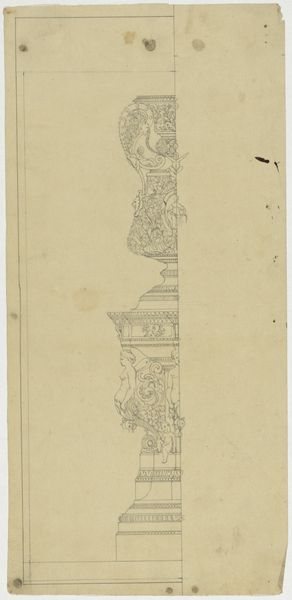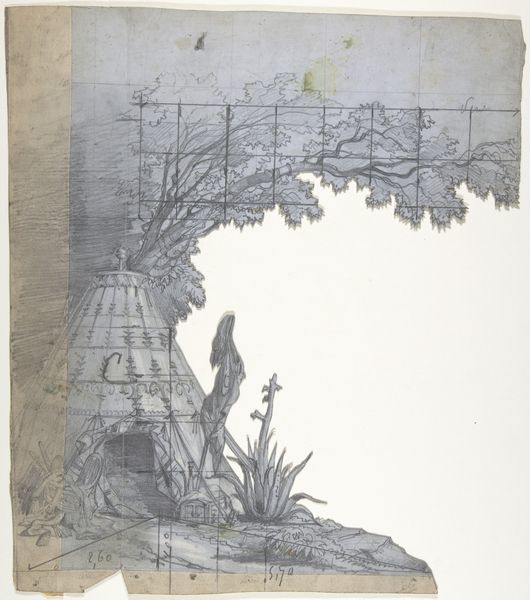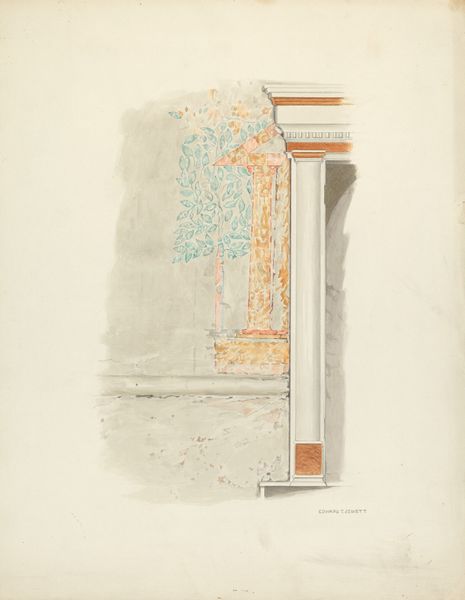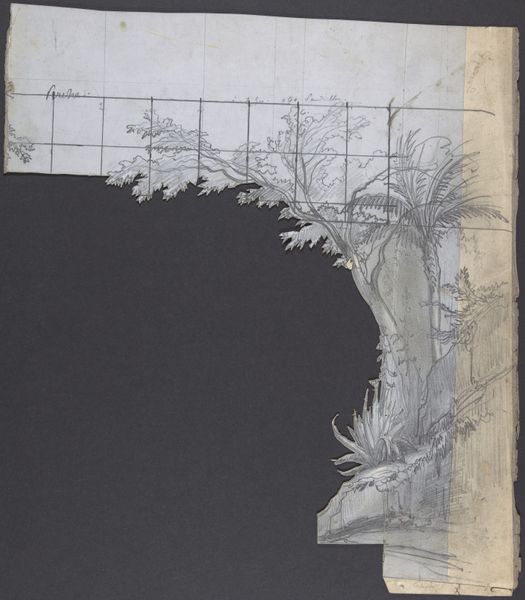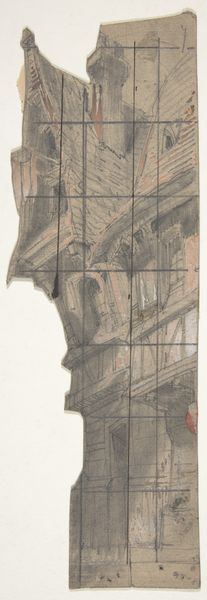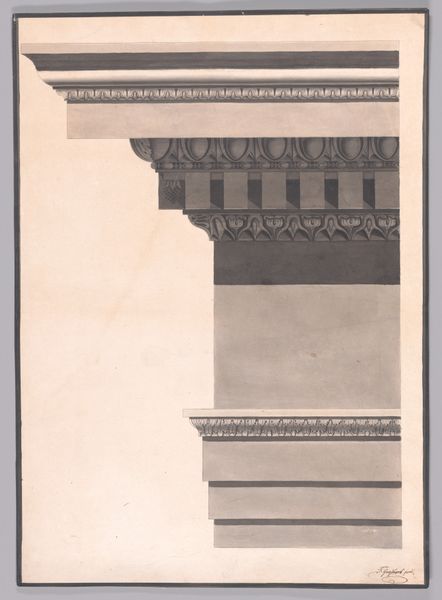
Design for a Stage Set at the Opéra, Paris 1830 - 1890
0:00
0:00
drawing, coloured-pencil, watercolor
#
drawing
#
coloured-pencil
#
landscape
#
watercolor
#
coloured pencil
#
watercolour illustration
#
academic-art
#
watercolor
Dimensions: Irregular sheet: 16 5/16 x 8 3/4 in. (41.5 x 22.2 cm)
Copyright: Public Domain
Curator: Here we have Eugène Cicéri's "Design for a Stage Set at the Opéra, Paris," created sometime between 1830 and 1890. The artwork, housed here at the Metropolitan Museum of Art, showcases the artist's talent with watercolor and colored pencil. Editor: Well, the initial impact is undeniably monumental. There’s a real sense of scale evoked by these imposing, shadowed columns, even in this relatively small sketch. The somber tones and perspective create an almost oppressive atmosphere. Curator: The use of watercolor and colored pencil gives us insight into the preparation of large scale scenic backdrops and perhaps the ephemeral and collaborative process behind stage design of the period. It’s intriguing to think about the artisans translating these initial concepts into full scale sets, and to ponder the class implications behind theatrical work. Editor: Agreed, the materiality here is striking. Look closely at how the watercolor bleeds into the pencil, creating these subtle gradations of light and shadow. It lends an incredible weight and tactility to otherwise flat surfaces. It’s almost sculptural. And how about the bold structural underdrawing - do you think the underlying gridwork might provide visual cues, as though revealing an unfinished state? Curator: Perhaps that exposed process suggests the sketch was created rapidly, indicative of high theatrical production demands, yet simultaneously emphasizing a preliminary design's significance within collaborative projects. Did these visible underpinnings democratize, or did they dictate hierarchies among workshop artists who contributed labor in various aspects—painting skills versus calculations and designs—? Editor: Hmm, there’s a tension there, absolutely, but to my eye that incompleteness brings to the fore the relationship of line to form. Notice the careful delineation of the columns’ fluting, versus the almost blocky abstraction of the architecture. A great many ideas and intentions come together into something compelling. Curator: The finished scenery would, however, conceal such underpinnings. So let's consider the cultural ramifications of that hidden labor. How might an awareness of these background forces impact the production or reception among contemporary audiences, whether wealthy elite or more working-class patrons, given Paris' cultural dynamism? Editor: Interesting points to consider! Ultimately, this piece holds such structural dynamism - in the interplay of color and perspective to which any eye will immediately be drawn. Curator: For me, the economic relationships embodied in this artwork echo beyond aesthetic considerations alone. Editor: Absolutely, and isn't it fantastic when these divergent points of view meet? Thank you.
Comments
No comments
Be the first to comment and join the conversation on the ultimate creative platform.
